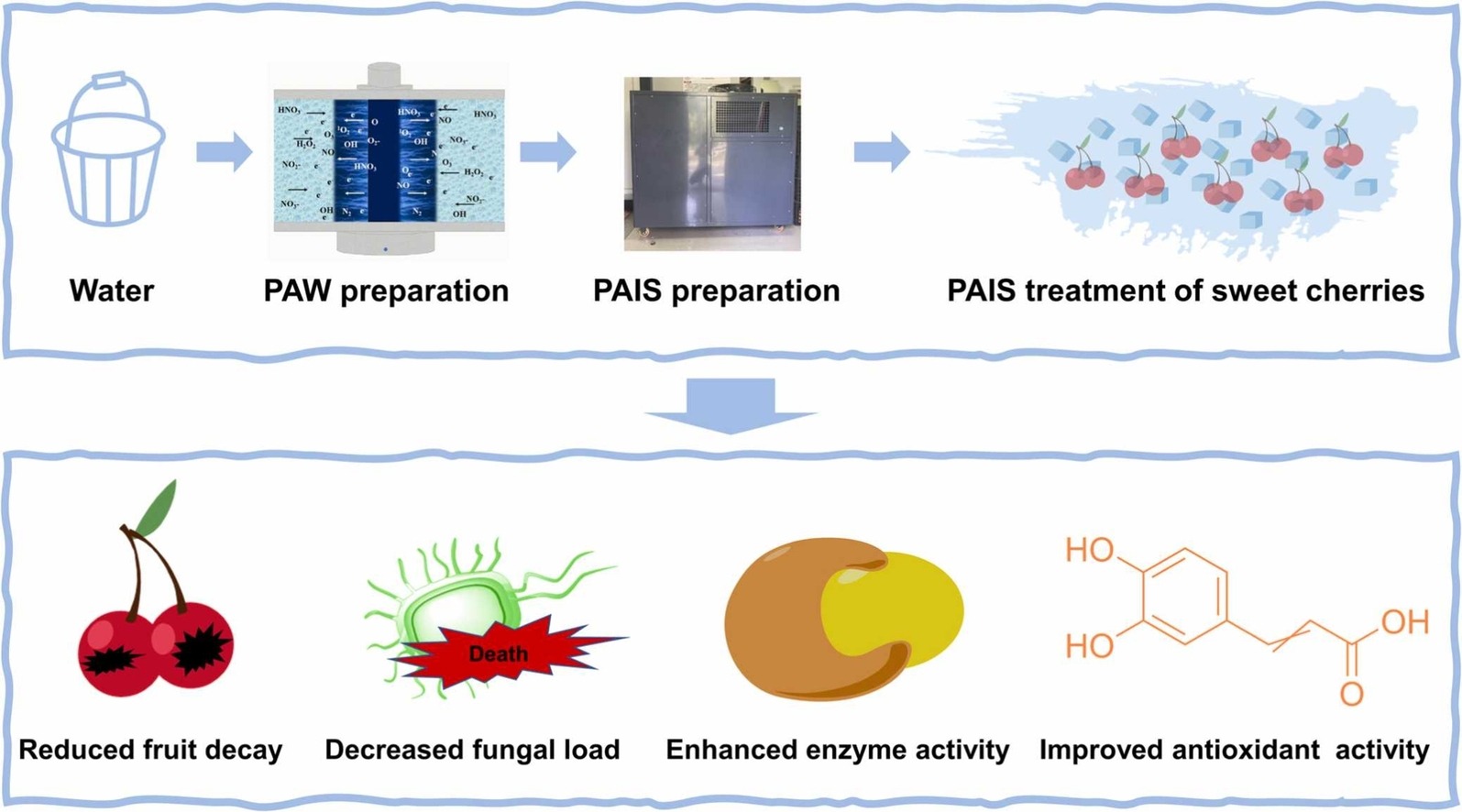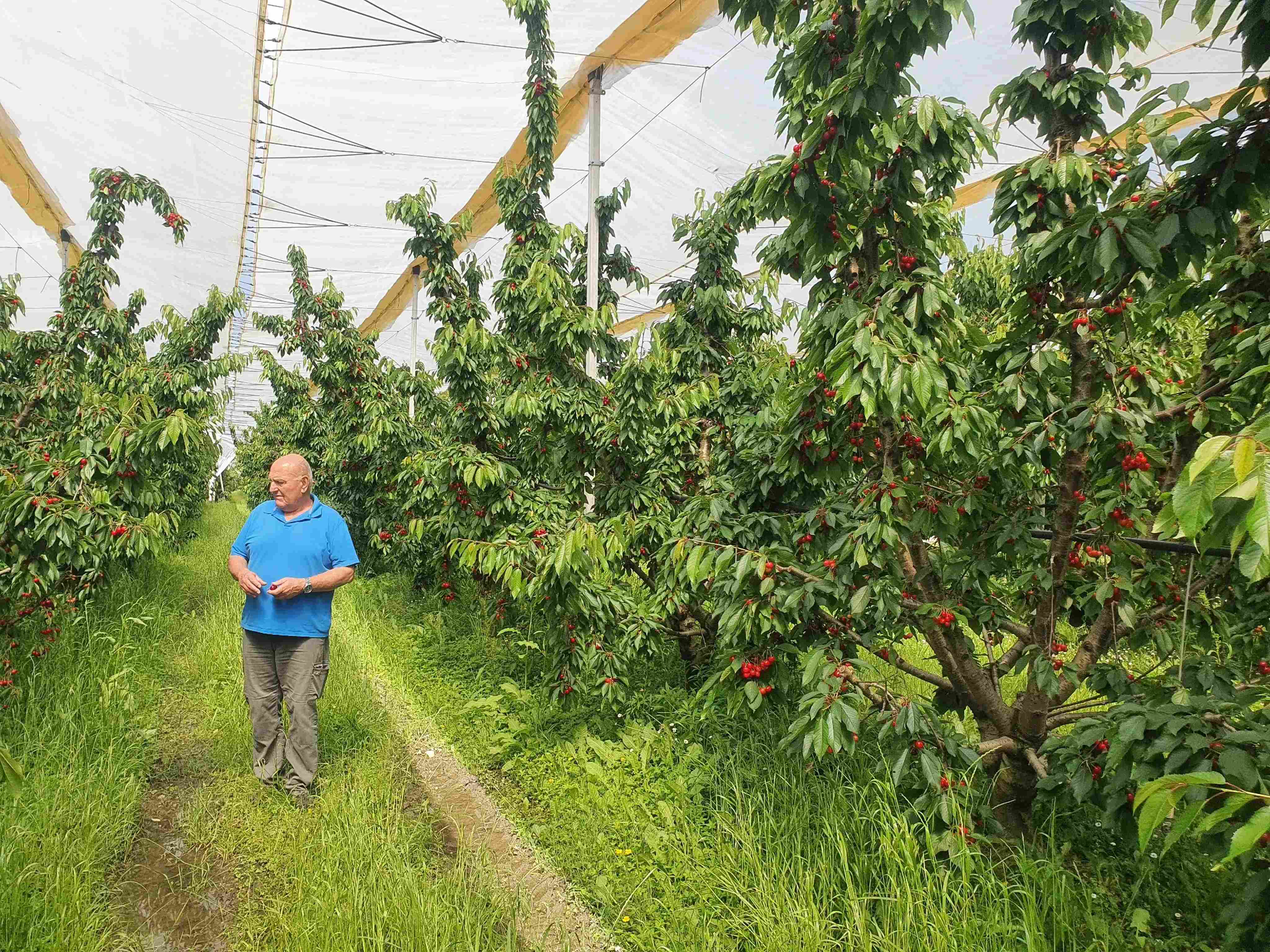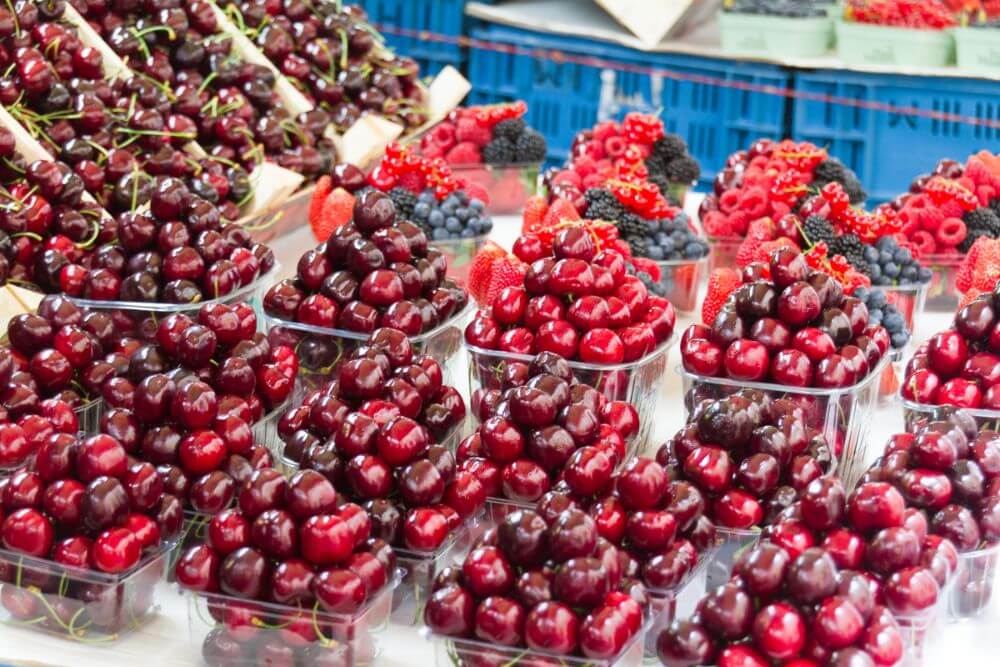Sweet cherry face significant post-harvest challenges, primarily due to their high respiration rate and susceptibility to attacks from several microorganisms. This often leads to rapid fruit decay, compromising both its quality and shelf-life. Traditional post-harvest methods involve cooling and use of synthetic fungicides, but these methods have limitations, such as potential fruit physical damage and environmental concerns.
A promising alternative is the use of Plasma-Activated Ice Slurry (PAIS), which combines pre-cooling and antifungal properties into one innovative solution.
A study conducted by a team of Chinese researchers explores the application of PAIS in sweet cherry preservation. PAIS contains reactive oxygen and nitrogen species known for their antimicrobial properties. The study aimed testing PAIS alongside the traditional ice water mixture to evaluate its effectiveness in reducing the internal temperature of sweet cherries and inhibiting fungal growth.
The results showed that in 30 minutes of treatment, PAIS managed to reduce the internal temperature of sweet cherry to 6.1°C, significantly outperforming the ice water mixture, which reduced the temperature only to 10.9°C. This rapid cooling is crucial for maintaining the fruit's quality by slowing down its metabolism. Additionally, the PAIS treatment demonstrated superior antifungal capabilities.
 Image 1.
Image 1.
Over the storage period, cherries treated with PAIS exhibited a lower decay rate of 25.3%, compared to a much higher 66.7% in the control group. Notably, fungal activity was only detected after the 13th day of storage in PAIS-treated cherries (while the control group had already shown a fungal load of 3.6 log10 CFU g-1).
Metabolomic analysis revealed that PAIS treatment not only inhibits microbial growth but also enhances the cherries' antioxidant properties. The PAIS used increased antioxidant compounds within the fruit, which play a crucial role in maintaining cellular integrity and the overall quality of the fruit.
The combination of rapid cooling and antifungal activity makes PAIS an effective tool for the post-harvest treatment of sweet cherry. Its ability to significantly reduce decay and extend shelf-life without the drawbacks of synthetic fungicides positions it as an efficient and “green” solution for the sweet cherry industry. The results suggest that PAIS could be applied to other perishable fruits, potentially transforming post-harvest management practices and reducing food waste.
In summary, the application of Plasma-Activated Ice Slurry (PAIS) represents an advancement in fruit preservation technology. By integrating pre-cooling and antifungal properties, PAIS offers a dual-action approach to maintain quality and extend cherries’ shelf-life. This method not only addresses the immediate need for effective post-harvest treatment, but also aligns with the growing demand for environmentally friendly agricultural practices.
Source: Shen, C., Jiang, F., Shao, S., Wu, D., & Chen, K. (2024). The effect of plasma-activated ice slurry with both pre-cooling and antifungal activity on postharvest sweet cherry fruit. Postharvest Biology and Technology, 212, 112867. https://doi.org/10.1016/j.postharvbio.2024.112867.
Image: Shen et al., 2024
Andrea Giovannini
University of Bologna (IT)
Cherry Times - All rights reserved













